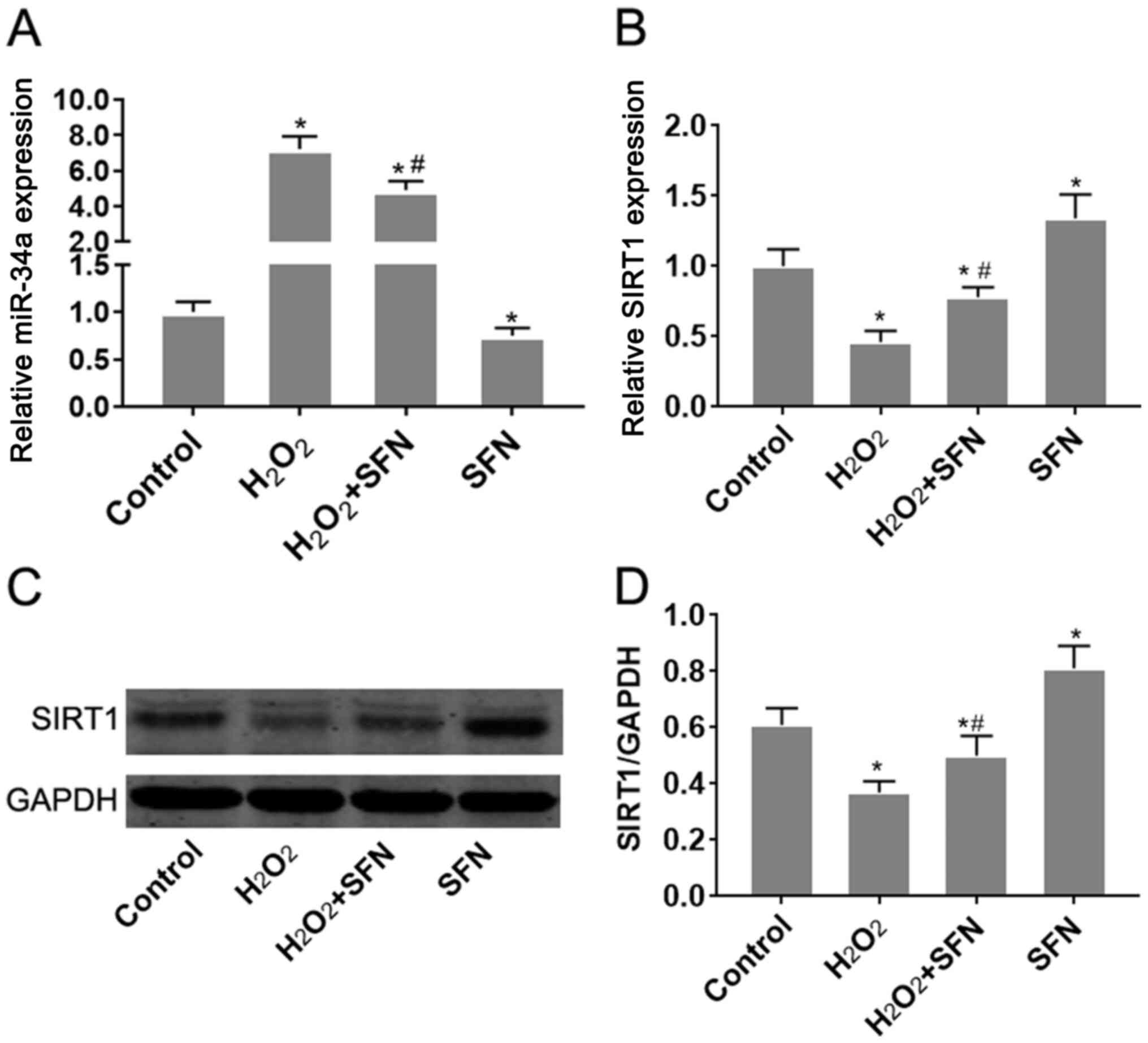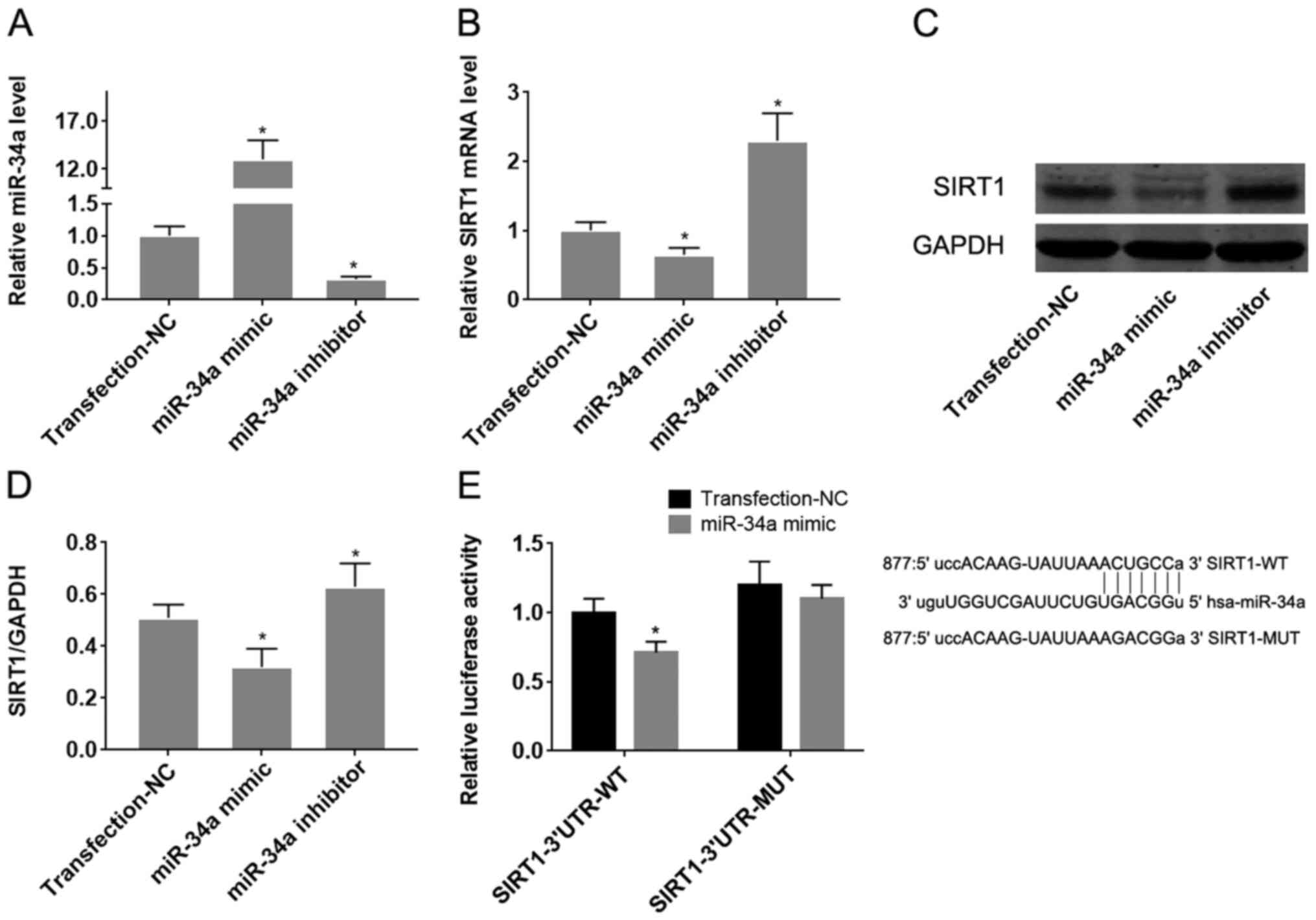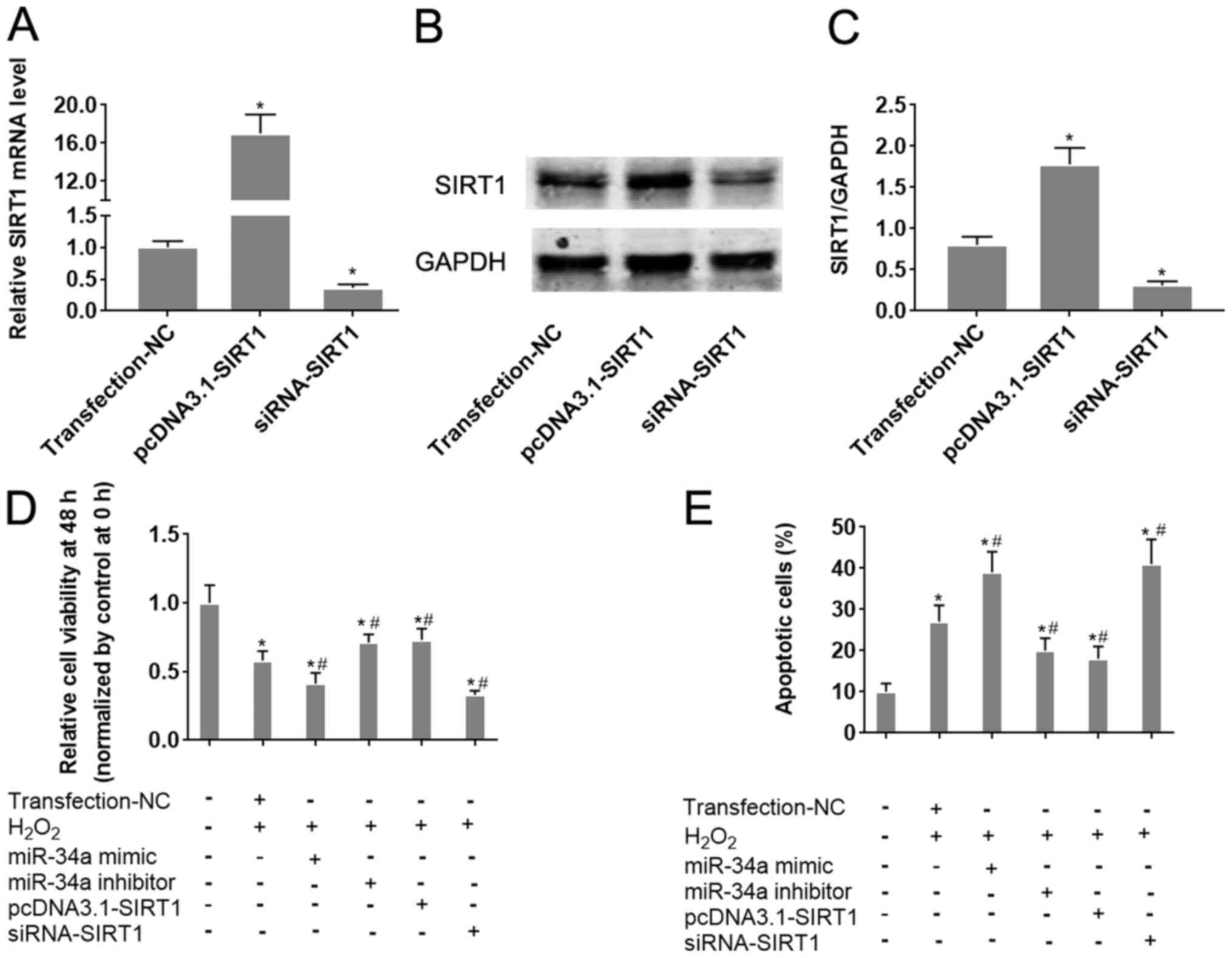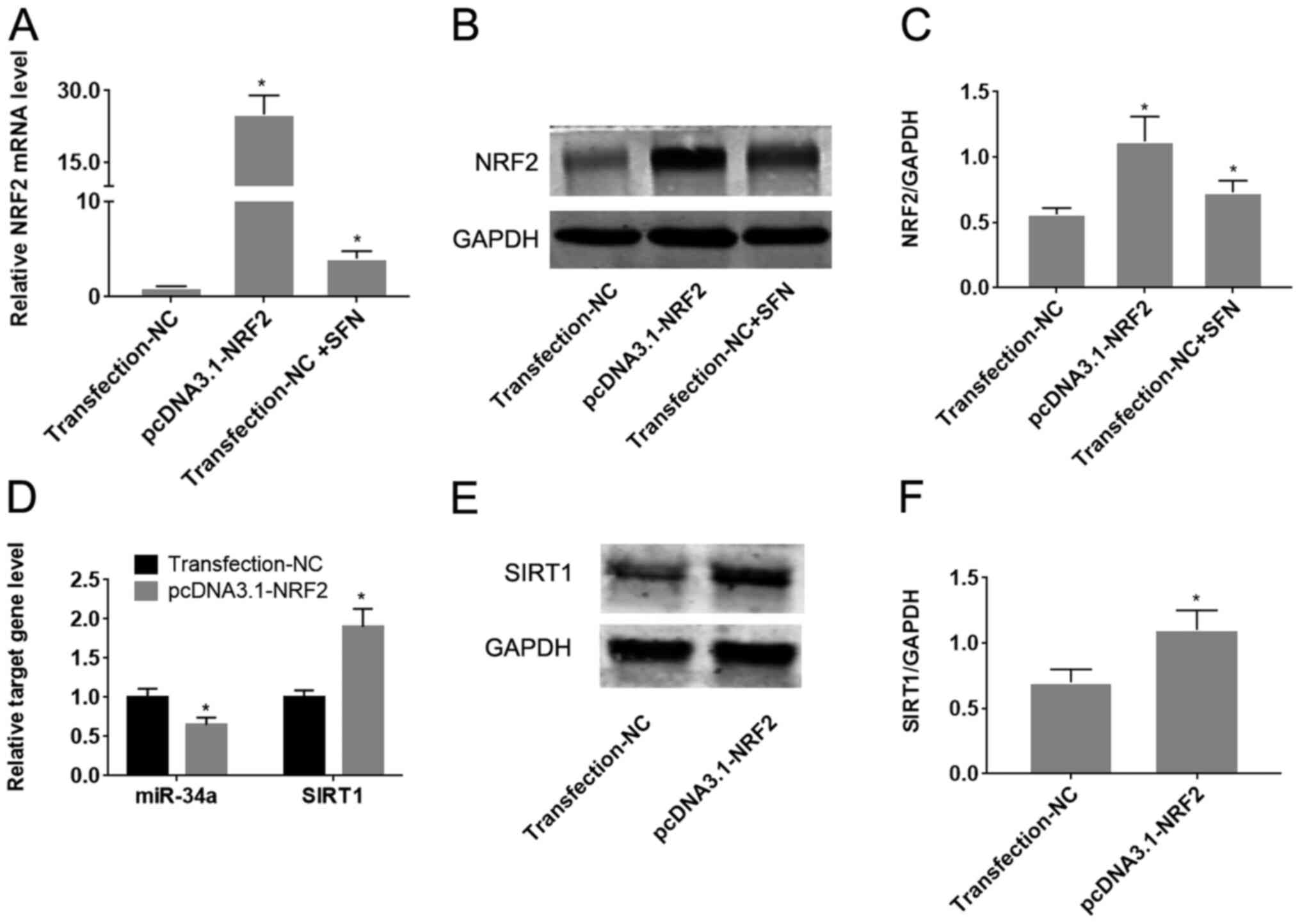|
1
|
Kobiyama K and Ley K: Atherosclerosis.
Circ Res. 123:1118–1120. 2018.PubMed/NCBI View Article : Google Scholar
|
|
2
|
Zhao D, Liu J, Wang M, Zhang X and Zhou M:
Epidemiology of cardiovascular disease in China: Current features
and implications. Nat Rev Cardiol. 16:203–212. 2019.PubMed/NCBI View Article : Google Scholar
|
|
3
|
Herrington W, Lacey B, Sherliker P,
Armitage J and Lewington S: Epidemiology of atherosclerosis and the
potential to reduce the global burden of atherothrombotic disease.
Circ Res. 118:535–546. 2016.PubMed/NCBI View Article : Google Scholar
|
|
4
|
Torres N, Guevara-Cruz M,
Velázquez-Villegas LA and Tovar AR: Nutrition and atherosclerosis.
Arch Med Res. 46:408–426. 2015.PubMed/NCBI View Article : Google Scholar
|
|
5
|
Criqui MH and Aboyans V: Epidemiology of
peripheral artery disease. Circ Res. 116:1509–1526. 2015.PubMed/NCBI View Article : Google Scholar
|
|
6
|
Fredman G and Tabas I: Boosting
inflammation resolution in atherosclerosis: The next frontier for
therapy. Am J Pathol. 187:1211–1221. 2017.PubMed/NCBI View Article : Google Scholar
|
|
7
|
Ma H, Su L, He X and Miao J: Loss of
HMBOX1 promotes LPS-induced apoptosis and inhibits LPS-induced
autophagy of vascular endothelial cells in mouse. Apoptosis.
24:946–957. 2019.PubMed/NCBI View Article : Google Scholar
|
|
8
|
Marchio P, Guerra-Ojeda S, Vila JM,
Aldasoro M, Victor VM and Mauricio MD: Targeting early
atherosclerosis: A focus on oxidative stress and inflammation. Oxid
Med Cell Longev. 2019(8563845)2019.PubMed/NCBI View Article : Google Scholar
|
|
9
|
Kattoor AJ, Pothineni NV, Palagiri D and
Mehta JL: Oxidative stress in atherosclerosis. Curr Atheroscler
Rep. 19(42)2017.PubMed/NCBI View Article : Google Scholar
|
|
10
|
Libby P, Bornfeldt KE and Tall AR:
Atherosclerosis: Successes, surprises, and future challenges. Circ
Res. 118:531–534. 2016.PubMed/NCBI View Article : Google Scholar
|
|
11
|
Li Z, Hyseni X, Carter JD, Soukup JM,
Dailey LA and Huang YC: Pollutant particles enhanced
H2O2 production from NAD(P)H oxidase and
mitochondria in human pulmonary artery endothelial cells. Am J
Physiol Cell Physiol. 291:C357–C365. 2006.PubMed/NCBI View Article : Google Scholar
|
|
12
|
Sita G, Hrelia P, Graziosi A and Morroni
F: Sulforaphane from cruciferous vegetables: Recent advances to
improve glioblastoma treatment. Nutrients. 10(1755)2018.PubMed/NCBI View Article : Google Scholar
|
|
13
|
Huang C, Wu J, Chen D, Jin J, Wu Y and
Chen Z: Effects of sulforaphane in the central nervous system. Eur
J Pharmacol. 853:153–168. 2019.PubMed/NCBI View Article : Google Scholar
|
|
14
|
Yoon HY, Kang NI, Lee HK, Jang KY, Park JW
and Park BH: Sulforaphane protects kidneys against
ischemia-reperfusion injury through induction of the nrf2-dependent
phase 2 enzyme. Biochem Pharmacol. 75:2214–2223. 2008.PubMed/NCBI View Article : Google Scholar
|
|
15
|
Chen Q, Wu S, Lu T and Chen J, Xu Z and
Chen J: The effect of sulforaphane on the activity and
mineralization of osteoblasts under oxidative stress. Pharmacology.
104:147–156. 2019.PubMed/NCBI View Article : Google Scholar
|
|
16
|
Zhu H, Jia Z, Strobl JS, Ehrich M, Misra
HP and Li Y: Potent induction of total cellular and mitochondrial
antioxidants and phase 2 enzymes by cruciferous sulforaphane in rat
aortic smooth muscle cells: Cytoprotection against oxidative and
electrophilic stress. Cardiovasc Toxicol. 8:115–125.
2008.PubMed/NCBI View Article : Google Scholar
|
|
17
|
Feinberg MW and Moore KJ: MicroRNA
regulation of atherosclerosis. Circ Res. 118:703–720.
2016.PubMed/NCBI View Article : Google Scholar
|
|
18
|
Liu Y, Zhang X, Chen J and Li T:
Inhibition of mircoRNA-34a enhances survival of human bone marrow
mesenchymal stromal/stem cells under oxidative stress. Med Sci
Monit. 24:264–271. 2018.PubMed/NCBI View Article : Google Scholar
|
|
19
|
Wang S, Guo C, Yu M, Ning X, Yan B, Zhao
J, Yang A and Yan H: Identification of H2O2 induced oxidative
stress associated microRNAs in HLE-B3 cells and their clinical
relevance to the progression of age-related nuclear cataract. BMC
Ophthalmol. 18(93)2018.PubMed/NCBI View Article : Google Scholar
|
|
20
|
Zhong X, Li P, Li J, He R, Cheng G and Li
Y: Downregulation of microRNA34a inhibits oxidized lowdensity
lipoproteininduced apoptosis and oxidative stress in human
umbilical vein endothelial cells. Int J Mol Med. 42:1134–1144.
2018.PubMed/NCBI View Article : Google Scholar
|
|
21
|
Singh P, Hanson PS and Morris CM: SIRT1
ameliorates oxidative stress induced neural cell death and is
down-regulated in parkinson's disease. BMC Neurosci.
18(46)2017.PubMed/NCBI View Article : Google Scholar
|
|
22
|
Zhang W, Huang Q, Zeng Z, Wu J, Zhang Y
and Chen Z: Sirt1 inhibits oxidative stress in vascular endothelial
cells. Oxid Med Cell Longev. 2017(7543973)2017.PubMed/NCBI View Article : Google Scholar
|
|
23
|
Chen Z, Shentu TP, Wen L, Johnson DA and
Shyy JY: Regulation of SIRT1 by oxidative stress-responsive miRNAs
and a systematic approach to identify its role in the endothelium.
Antioxid Redox Signal. 19:1522–1538. 2013.PubMed/NCBI View Article : Google Scholar
|
|
24
|
Dacosta C and Bao Y: The role of microRNAs
in the chemopreventive activity of sulforaphane from cruciferous
vegetables. Nutrients. 9(902)2017.PubMed/NCBI View Article : Google Scholar
|
|
25
|
Rafiei H, Ashrafizadeh M and Ahmadi Z:
MicroRNAs as novel targets of sulforaphane in cancer therapy: The
beginning of a new tale? Phytother Res. 34:721–728. 2020.PubMed/NCBI View Article : Google Scholar
|
|
26
|
Livak KJ and Schmittgen TD: Analysis of
relative gene expression data using real-time quantitative PCR and
the 2(-Delta Delta C(T)) method. Methods. 25:402–408.
2001.PubMed/NCBI View Article : Google Scholar
|
|
27
|
Bignotti E, Calza S, Tassi RA, Zanotti L,
Bandiera E, Sartori E, Odicino FE, Ravaggi A, Todeschini P and
Romani C: Identification of stably expressed reference small
non-coding RNAs for microRNA quantification in high-grade serous
ovarian carcinoma tissues. J Cell Mol Med. 20:2341–2348.
2016.PubMed/NCBI View Article : Google Scholar
|
|
28
|
Perrotta I and Aquila S: The role of
oxidative stress and autophagy in atherosclerosis. Oxid Med Cell
Longev. 2015(130315)2015.PubMed/NCBI View Article : Google Scholar
|
|
29
|
Förstermann U, Xia N and Li H: Roles of
vascular oxidative stress and nitric oxide in the pathogenesis of
atherosclerosis. Circ Res. 120:713–735. 2017.PubMed/NCBI View Article : Google Scholar
|
|
30
|
Vanduchova A, Anzenbacher P and
Anzenbacherova E: Isothiocyanate from broccoli, sulforaphane, and
its properties. J Med Food. 22:121–126. 2019.PubMed/NCBI View Article : Google Scholar
|
|
31
|
Yang L, Palliyaguru DL and Kensler TW:
Frugal chemoprevention: Targeting nrf2 with foods rich in
sulforaphane. Semin Oncol. 43:146–153. 2016.PubMed/NCBI View Article : Google Scholar
|
|
32
|
Saleh DO, Mansour DF, Hashad IM and Bakeer
RM: Effects of sulforaphane on D-galactose-induced liver aging in
rats: Role of keap-1/nrf-2 pathway. Eur J Pharmacol. 855:40–49.
2019.PubMed/NCBI View Article : Google Scholar
|
|
33
|
Li B, Kim DS, Yadav RK, Kim HR and Chae
HJ: Sulforaphane prevents doxorubicin-induced oxidative stress and
cell death in rat h9c2 cells. Int J Mol Med. 36:53–64.
2015.PubMed/NCBI View Article : Google Scholar
|
|
34
|
Campbell L, Howie F, Arthur JR, Nicol F
and Beckett G: Selenium and sulforaphane modify the expression of
selenoenzymes in the human endothelial cell line EAhy926 and
protect cells from oxidative damage. Nutrition. 23:138–144.
2007.PubMed/NCBI View Article : Google Scholar
|
|
35
|
Sajja RK, Kaisar MA, Vijay V, Desai VG,
Prasad S and Cucullo L: In vitro modulation of redox and metabolism
interplay at the brain vascular endothelium: Genomic and proteomic
profiles of sulforaphane activity. Sci Rep. 8(12708)2018.PubMed/NCBI View Article : Google Scholar
|
|
36
|
Guerrero-Beltrán CE, Calderón-Oliver M,
Pedraza-Chaverri J and Chirino YI: Protective effect of
sulforaphane against oxidative stress: Recent advances. Exp Toxicol
Pathol. 64:503–508. 2012.PubMed/NCBI View Article : Google Scholar
|
|
37
|
Yanaka A, Zhang S, Tauchi M, Suzuki H,
Shibahara T, Matsui H, Nakahara A, Tanaka N and Yamamoto M: Role of
the nrf-2 gene in protection and repair of gastric mucosa against
oxidative stress. Inflammopharmacology. 13:83–90. 2005.PubMed/NCBI View Article : Google Scholar
|
|
38
|
Bai Y, Wang X, Zhao S, Ma C, Cui J and
Zheng Y: Sulforaphane protects against cardiovascular disease via
nrf2 activation. Oxid Med Cell Longev. 2015(407580)2015.PubMed/NCBI View Article : Google Scholar
|
|
39
|
Houghton CA, Fassett RG and Coombes JS:
Sulforaphane and other nutrigenomic nrf2 activators: Can the
clinician's expectation be matched by the reality? Oxid Med Cell
Longev. 2016(7857186)2016.PubMed/NCBI View Article : Google Scholar
|
|
40
|
Su X, Jiang X, Meng L, Dong X, Shen Y and
Xin Y: Anticancer activity of sulforaphane: The epigenetic
mechanisms and the nrf2 signaling pathway. Oxid Med Cell Longev.
2018(5438179)2018.PubMed/NCBI View Article : Google Scholar
|
|
41
|
Dinkova-Kostova AT, Fahey JW, Kostov RV
and Kensler TW: KEAP1 and done? Targeting the NRF2 pathway with
sulforaphane. Trends Food Sci Technol. 69:257–269. 2017.PubMed/NCBI View Article : Google Scholar
|
|
42
|
Eren E, Tufekci KU, Isci KB, Tastan B,
Genc K and Genc S: Sulforaphane inhibits lipopolysaccharide-induced
inflammation, cytotoxicity, oxidative stress, and miR-155
expression and switches to mox phenotype through activating
extracellular signal-regulated kinase 1/2-nuclear factor erythroid
2-related factor 2/antioxidant response element pathway in murine
microglial cells. Front Immunol. 9(36)2018.PubMed/NCBI View Article : Google Scholar
|
|
43
|
Zampetaki A, Dudek K and Mayr M: Oxidative
stress in atherosclerosis: The role of microRNAs in arterial
remodeling. Free Radic Biol Med. 64:69–77. 2013.PubMed/NCBI View Article : Google Scholar
|
|
44
|
Chen T, Huang Z, Wang L, Wang Y, Wu F,
Meng S and Wang C: MicroRNA-125a-5p partly regulates the
inflammatory response, lipid uptake, and ORP9 expression in
oxLDL-stimulated monocyte/macrophages. Cardiovasc Res. 83:131–139.
2009.PubMed/NCBI View Article : Google Scholar
|
|
45
|
Tong N, Jin R, Zhou Z and Wu X:
Involvement of microRNA-34a in age-related susceptibility to
oxidative stress in ARPE-19 cells by targeting the silent mating
type information regulation 2 homolog 1/p66shc pathway:
Implications for age-related macular degeneration. Front Aging
Neurosci. 11(137)2019.PubMed/NCBI View Article : Google Scholar
|
|
46
|
Cheleschi S, Tenti S, Mondanelli N,
Corallo C, Barbarino M, Giannotti S, Gallo I, Giordano A and
Fioravanti A: MicroRNA-34a and microRNA-181a mediate
visfatin-induced apoptosis and oxidative stress via NF-kappaB
pathway in human osteoarthritic chondrocytes. Cells.
8(874)2019.PubMed/NCBI View Article : Google Scholar
|
|
47
|
Yamakuchi M, Ferlito M and Lowenstein CJ:
MiR-34a repression of SIRT1 regulates apoptosis. Proc Natl Acad Sci
USA. 105:13421–13426. 2008.PubMed/NCBI View Article : Google Scholar
|
|
48
|
Guo Y, Li P, Gao L, Zhang J, Yang Z,
Bledsoe G, Chang E, Chao L and Chao J: Kallistatin reduces vascular
senescence and aging by regulating microRNA-34a-SIRT1 pathway.
Aging Cell. 16:837–846. 2017.PubMed/NCBI View Article : Google Scholar
|
|
49
|
Kurinna S and Werner S: NRF2 and
microRNAs: New but awaited relations. Biochem Soc Trans.
43:595–601. 2015.PubMed/NCBI View Article : Google Scholar
|
|
50
|
Shah NM, Zaitseva L, Bowles KM, MacEwan DJ
and Rushworth SA: NRF2-Driven miR-125B1 and miR-29B1
transcriptional regulation controls a novel anti-apoptotic miRNA
regulatory network for AML survival. Cell Death Differ. 22:654–664.
2015.PubMed/NCBI View Article : Google Scholar
|



















